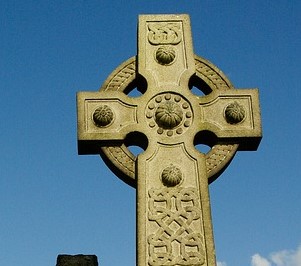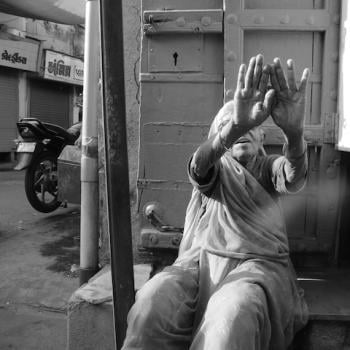It’s Paddy’s Day on Thursday, March 17th. So firstly, as a native Irishman living stateside, I’d like to set the record straight: the Irish don’t eat (nor particularly like) corned beef! Traditionally we’re bacon & cabbage gobblers; but corned beefers? Sorry.
That’s an immigrant Jewish practice their starving Irish neighbors adopted out of necessity. According to thekitchenproject.com, when the Irish arrived in America, they couldn’t find a bacon joint like they had in Ireland so they settled for Jewish corned beef instead, which was very similar in texture.
And the rest, as they say, is the stuff of myth and history.
My first time to consume corned beef was in 1999 when I emigrated to California. And I haven’t looked back . . . Especially if the beast is cooked in Guinness rather than wimpy water, stock or wine, it adds a deep, rich, earthy signature to the dish.
But what of the spirituality of the man Patrick? How on earth did he ingratiate himself to a heathen bunch of 4th-century Celtic druids and pagans who knew nothing of his ‘God’ or Christ? Well it seems he was a bit of a charmer with a stolid faith to burgeon his holy quest: the conversion of the heathens.
Somehow against all the odds, he pulled it off. But not without a wee bit of wizardry, beguilement, and clever stunts.
The Deer’s Cry
In a poem attributed to St. Patrick, which is known as The Deer’s Cry or St Patrick’s Breastplate, a story is told of how the saint used a power called féth fíada to transform himself and a companion into wild deer, subsequently using the ‘disguise’ to escape ambush while en route to the Hill of Tara – the Mecca of Druidic Hibernia. And the sacred burial site of their gods.
Anticipating their arrival, and with every intention of slaying or imprisoning the two Christians, their Celtic adversaries saw only a deer with a fawn roaming across the fields. As a result of this ‘spell’, the missionaries successfully reached the hill without incident.
But of course they did!
A Defiant Fire
The Celtic feast of Beltaine (feast of the fires) was a major festival to celebrate the dawn of summer and the subjugation of dark powers. Traditionally, a fire would be lit by Ireland’s High King on the top of the Hill of Tara, and his fire would then be used to light all other fires.
So, when St. Patrick lit a fire on the Hill of Slane in advance of King Laoghaire, he was deliberately provoking the ire of Pagan chiefs.
Druid elders were dispatched by Laoghaire to investigate and they reported back that Patrick’s fire had magical powers because they could not extinguish it. They warned that if the king did not snuff out Patrick’s bonfire, it would burn forever.
Unable to extinguish the saint’s fire, the High King acceded that Patrick’s ‘magic’ was stronger than his. Although he did not to convert to Christianity himself, the king endorsed Patrick’s mission to convert the Irish.
And a little bit of Inculturation goes a long way….

As the legend goes, one fine day the missionary was preaching close to a pagan standing stone. Such a talisman was considered sacred to his audience of potential converts because it was already carved with a circle.
This mark would have been familiar to all Pagans as a symbol of the sun or moon gods.
St. Patrick is credited with drawing a Christian (or Latin) cross through the circle, and blessing the stone. In this way, it is said, he created the first Irish Celtic Cross and demonstrated his willingness to adapt heathen practices and symbols to Christian beliefs in order to ease the transition from Paganism to Christianity.
And of course the Shamrock….
Being aware that the number three held special significance in Celtic tradition (and, indeed, in many pagan beliefs), he applied this knowledge in a clever way.
He used the shamrock, a three-leaved clover which grows all over the island, to explain the Christian concept of the Holy Trinity i.e. the theory that God the Father, God the Son and God the Holy Spirit are each separate “persons” who (ontologically) share one divine nature.
As for the Snakes….
Second only to the shamrock yarn is the legend of St. Patrick driving all the snakes out of Ireland into the sea where they drowned.
Many popular images of Patrick show the Bishop-Saint standing on snakes, i.e. conquering the “demonic” reptiles. We Irish like to believe that there are no snakes in Ireland (save those in zoos) because of his wizardry.
It is, however, very unlikely there were ever any snakes in Ireland! Some interpret this legend as symbolic of Patrick’s removal of all Pagan influence from the island.
My own personal take on it – symbolic or otherwise – is that, after entering the Atlantic Ocean, the reptiles made their way to the Americas, and eventually metamorphosized into what we today refer to as U.S. Senators! Slimy, shifty, untrustworthy beguilers of our trust and gullibility. Until they are elected president that is.
After which they could learn a lesson or two from the man Patrick: visionary spiritual leadership, respect for the stranger and outcast, solid grounding in meditative prayer for guidance, and the diplomatic skills of finely tuned inculturation when engaging with such widespread ethnic diversity and issues.
Happy Paddy’s Day and enjoy your corned beef and glass of whatever you’re having!
Cover Photo: Pixabay















